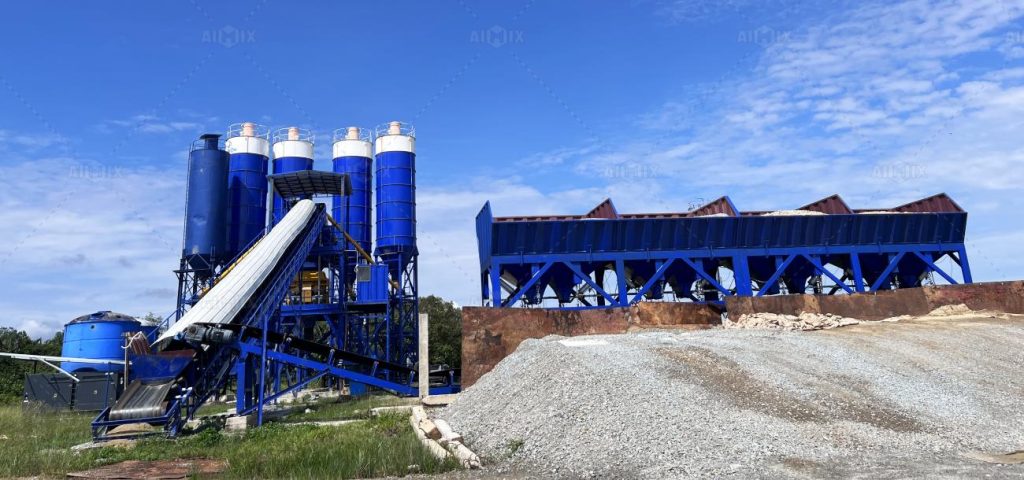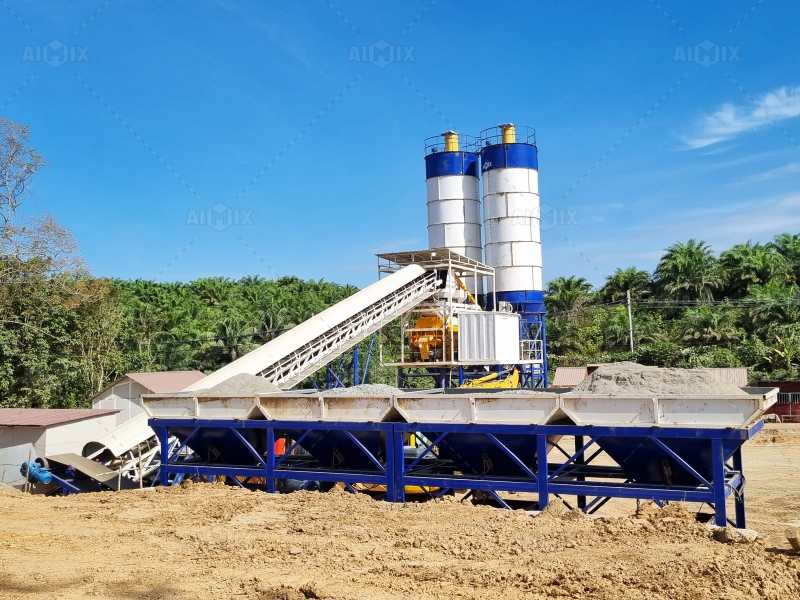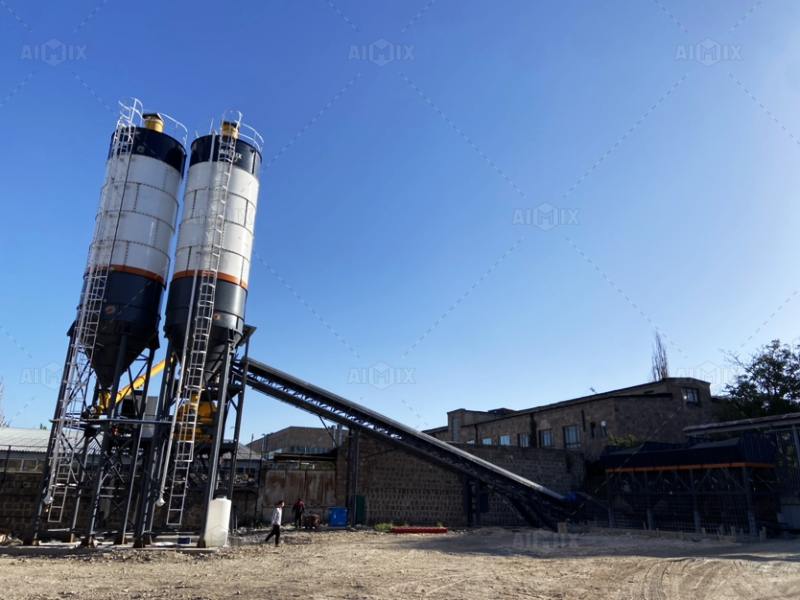The cost of a ready mix concrete plant has always been a crucial consideration for contractors and construction firms. As we approach 2025, the question on everyone’s mind is: Is the price of a ready mix concrete plant rising or falling? To understand this, we need to evaluate the factors influencing concrete plant costs, including global market conditions, technology advancements, and supply chain disruptions. Additionally, the prices of stationary concrete batching plants, mobile batching plants, and concrete mixing plants all contribute to the overall cost landscape.
In this article, we’ll dive into the key elements that will shape the trends for ready mix concrete plant price in 2025.

Key Factors Influencing Ready Mix Concrete Plant Price
1. Raw Material Costs
One of the most significant drivers of ready mix concrete plant prices is the cost of raw materials used in manufacturing the plants themselves. Steel, for instance, remains a primary component in the construction of stationary concrete batching plants and concrete mixing plants. Steel prices have been volatile due to global supply chain issues, particularly in regions like China, the EU, and the US.
In 2025, many experts predict that raw material prices will stabilize somewhat, but the long-term trend suggests they may still hover around higher levels compared to pre-pandemic rates. As a result, concrete batching plant cost is likely to remain elevated, making it crucial for construction businesses to factor this into their budgeting.
2. Supply Chain Disruptions
The COVID-19 pandemic and the resulting global supply chain disruptions have led to delays and higher costs in many industries, including construction equipment. Although the situation is improving, supply chain challenges such as labor shortages, transportation bottlenecks, and the rising cost of shipping will continue to influence concrete mixing plant prices.
For example, some components of stationary concrete batching plants, such as mixers, controllers, and silos, are still subject to delayed production times and price hikes. In 2025, it is expected that suppliers will have learned to navigate these challenges, but the costs associated with procurement will still impact plant pricing.

3. Technological Advancements
Another significant trend affecting the price of ready mix concrete plants is the increasing sophistication of technology. In 2025, the push for automation and improved efficiency continues to grow. Many modern concrete batching plants feature digital control systems, IoT-enabled monitoring, and automated mixing processes.
While stationary concrete batching plant price is higher for models with advanced technology, these innovations provide a substantial return on investment (ROI) over time. Increased automation reduces the need for manual labor, minimizes errors, and enhances the precision and consistency of the concrete mix, which is essential for high-quality production.
For example, Aimix’s AJ series of batching plants offer automatic operation and monitoring capabilities that help operators maintain consistency while reducing operational costs. While the upfront cost might be higher, these technological upgrades often result in savings over the plant’s lifespan, as they significantly increase operational efficiency and minimize waste.
4. Fuel and Energy Prices
Fuel and energy prices play a crucial role in the cost of operating a concrete batching plant. These plants require large amounts of energy for mixing, conveyor operations, and even for heating systems in colder regions. In 2025, the global energy market is still in flux, with oil prices and electricity rates showing signs of gradual increases.
This upward pressure on energy costs could contribute to a rise in ready mix concrete plant price, especially for plants with larger production capacities. Buyers may find themselves paying more for their plant’s operation, particularly in regions where energy costs are rising faster than inflation.
5. Local Regulations and Environmental Standards
Governments worldwide are tightening environmental regulations and sustainability standards. These regulations often require the use of eco-friendly materials and processes, such as dust control systems, energy-efficient motors, and water recycling mechanisms in stationary concrete batching plants.
As a result, manufacturers are designing and producing plants with these green features, which can increase upfront costs. However, many of these eco-friendly features are proving to be cost-effective over the long term, as they lead to lower operating costs and help contractors meet stringent environmental standards.

Will Prices for Ready Mix Concrete Plants Rise or Fall in 2025?
Given the factors above, it’s likely that the price of ready mix concrete plants will experience moderate increases in 2025, though the rate of increase may vary depending on location, configuration, and plant size.
Price Trends for Specific Plant Types
1. Mobile vs Stationary Batching Plants
For those considering mobile versus stationary plants, mobile concrete batching plants are expected to remain more affordable than their stationary counterparts in 2025. This is because mobile plants are generally smaller and less complex, requiring fewer materials and offering quicker setup times. However, stationary plants, particularly large-capacity plants, tend to command higher prices due to their durability and extensive production capabilities.
2. Small-Scale vs Large-Scale Concrete Mixing Plants
Small-scale concrete mixing plant (with capacities below 50m³/h) will likely see a slight decrease in price due to increased competition among manufacturers, especially in emerging markets. However, large-scale plants (above 100m³/h) are expected to see an increase in price due to the higher demand for larger, more robust plants that can handle commercial construction projects, roads, and bridges.
Conclusion
In summary, while the price of ready mix concrete plants may experience a slight increase in 2025, the overall trend will be driven by technological innovations, raw material costs, and supply chain improvements. Stationary concrete batching plant prices and concrete mixing plant prices are expected to remain on the higher end for large, high-tech plants, but smaller models may see more competitive pricing as manufacturers seek to capture market share.
For contractors and construction companies looking to invest in concrete batching plants in 2025, it’s essential to consider not just the initial purchase price but also the long-term benefits that technology, energy savings, and operational efficiencies bring. By weighing these factors, businesses can make more informed purchasing decisions that will maximize ROI in the years to come.
